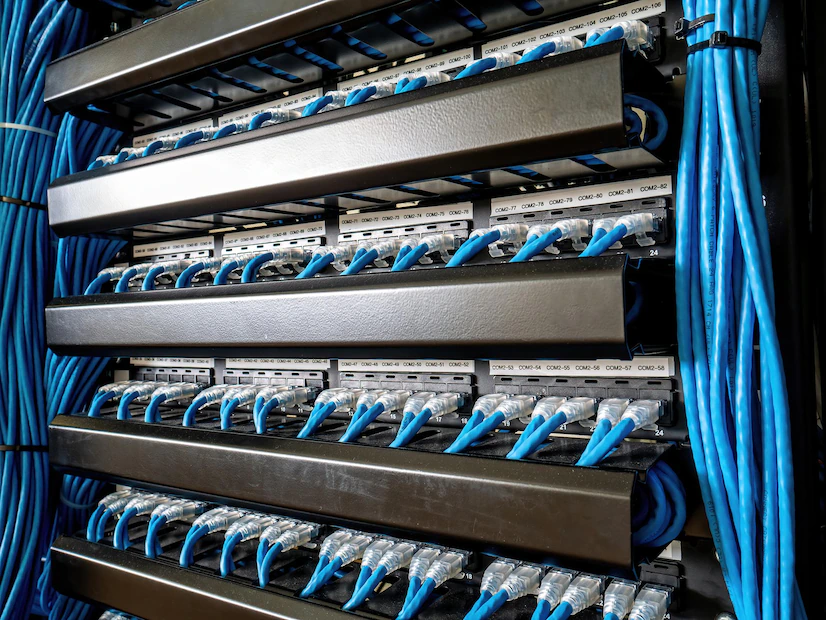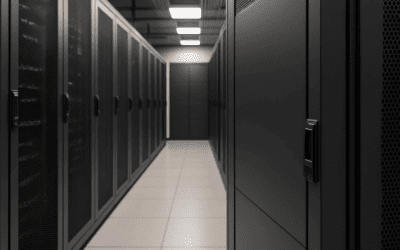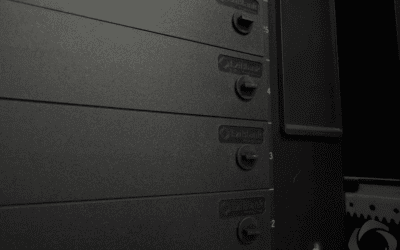Patch Panel: What it is and why your data center needs it
Your data center is only as reliable as its weakest link. You could have the best infrastructure and technology in the world but if your cables aren’t organized, it can bring down the entire network.
That’s where a patch panel comes in. Patch panels are an efficient and flexible system for keeping your data center organized and make it very easy to updateand modify cabling for a future environment.
In this article we will cover what a patch panel is, the different types and why exactly your data center needs it.
In the article:
[—ATOC—]
[—TAG:h2—]
What is a patch panel?
A patch panel is a metal frame with a series of ports into which cables, aka patch cords, are inserted. The cables connect different devices within data centers, such as servers, switches, and routers.
Patch cords come in a variety of different colors and sizes. The type and size of the patch cord will vary depending on the port to which it is connected. For example, a small patch cord might be used to connect a switch to a router, while a larger patch cord might be used to connect a server to a switch.
What is a patch panel used for?
Patch panels are used when you are connecting these data center components, like multiple computers to servers and other components using cables.
As we touched on, it’s essential that you manage each cable properly and plan everything correctly to avoid problems down the line..
Patch panel ports help organize the patch cables in a particular group which can be used to easily identify which device is causing problems and repair it. They also allow for easy organization and management of cable runs, and they provide a means to quickly and easily connect and disconnect devices from a telecommunications system.
It is also necessary to consider its flexibility and adaptability to any potential future development. Patches panels are used for this exact purpose.
Patch panel types
A couple different types of patch panels exist in a typical network based upon the cables they work with – the fiber patch panel and Ethernet patch panel.
Both have different design configurations and numbers of incoming ports and are customizable to meet various cabling demands
Fiber optic patch panels
A fiber optic patch panel is a type of panel that allows for the connection and disconnection of fiber optic cables. It is used to manage and organize these cables, and it provides a means to quickly and easily connect disconnect devices from a telecommunications system.
Fiber optic patches come in a variety of different designs, depending on the type of cable they are designed to work with. They are generally customizable to meet the needs of any particular network.
Ethernet patch panels
An Ethernet patch panel is a type of panel that allows for the connection and disconnection of Ethernet cables. An ethernet cable is a cable that physically connects a computer or server to the internet.
These similarly come in a variety of different designs, including feedthrough and punchdown configurations and are designed for insulated / unshielded copper cables.
What are the advantages of patch panels?
As we have touched on, there are many advantages of patch panels. This includes:
- Simplified cable management. Marking individual cable runs through patches makes the identification and management process much easier.
- Aesthetic appeal. An organized cabling is usually a visual delight for everyone. It has become common to see many before-and-after photos on cables using patch boards and other cable-management devices.
- Flexibility. Patch Panel gives you flexibility and eliminates the possibility of changing cables or transferring gear in the event that something breaks.
- Easy maintenance. Patch panels provide a way to easily and efficiently connect cables to other devices, and they also make it easy to troubleshoot any problems that may occur.
Patch panel cable management system
Patch panel cable management system refers to a technique or approach used to manage and organize patch panel cords and cables in a data center.
These techniques include:
- Labeling Cables. An important aspect of using a patch panel is ensuring that the cables are properly labeled. There are a variety of different ways to label cables and whichever method you choose, be sure to use a consistent system so that everyone on your team will be able to easily identify the cables.
- Patch cable organizers. Patch cable organizers are used to neatly run cables along between patch panels and the corresponding piece of equipment. This avoids tangles which could damage the cables over time.
- Color coded cables. Using different coloured cables for different purposes can help to quickly and easily identify the function of each cable.
- Zip ties. Zip ties are inexpensive and can be used to bundle multiple cables together, which makes them ideal for use in a data center. When using zip ties, it is important to make sure that the cables are secure and that there is no slack which could lead to a cable becoming disconnected from the patch panel over time.
The necessity of patch panels
Patch panels are one of the most essential pieces of hardware in any data center. They provide a way to easily and efficiently connect cables to other devices, keeping your server room organized, and they also make it easy to troubleshoot any problems that may occur.
If you want other ways to keep your data center running smoothly, check out our basics of airflow management or ultimate guide to blanking panels.




